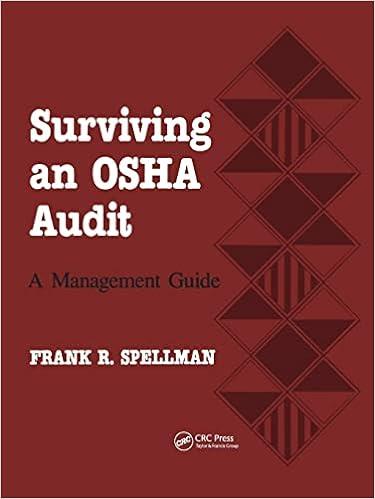raise money to buy equipment. The tax returns shall be filed based on the eight-year equipment's useful life and amortisation of the bond discount. Betty is hesitant to make the change requested, believing it is unethical to increase operating profit in this manner. Edward contends that "the life of an asset is only an estimate, and I have heard that our competition uses a 12-year life on their production equipment. The adoption of the revised useful life will make our financials comparable and support our move to repurchase 10 per cent of issued ordinary shares." Edward also maintains that discounts on the issue of bonds can be written off when the bond liability, with a carrying amount of R981 673, is repaid in three years. You are required to: a. Explain whether the change in asset ate is unethical Marks b. Explain whether the siagested treahment of discount on the issue of [4] bonds is unethical. Be sure to indicate the effect of the suggested treatment on ptofit before tax over the remaining three years. 5. Indieate the ellect of Edward Moahiele's proposed change in the [6] estimated usefut life on inoome before taxes in the year of the supgested change in practical ite. d. Explain reasons that a board of BCL can use to support its decision to [5] buy back the company's issued ordinary shares from shaseholden. Total marks for question 2 [20] Question 3 [30 marks [50 minutes] Choose the correct answer from the four choices provided 1. Proper control for over-the-counter cash receipts includes: a. a cash register with totals visible to the customer. b. using electronic cash registers with no tapes. c. Cash count sheets requiring only the supervisor's signature. d. cash count sheets requiring only the cashier's signature. [1 mark] Berliner Containerisation Limited (hereafter "BCL") is suffering from declining sales of its principal product, non-biodegradable plastic cartons. Bank overdraft facilities have been used to keep the company operations going. and as a result. the planned repurchase of company ordinary shares has been deferred. The Chief Executive, Edward Moahlele, instructs the Finance Director, Betty Etosha, to lengthen asset lives to reduce depreciation expense, increasing operating losses. He also instructs Betty not to show amortisation of discount on the issue of bonds. A processing line of automated plastic squeezing-out equipment, purchased for R3 100000 in January 2021 . was initially estimated to have a useful life of eight years and a residual value of R300000. Depreciation has been recorded for two years, and the South African Revenue Service (SARS) has accepted the amount for tax purposes. Edward wants the estimated useful life changed to 12 years and the straight-line method continued. He also wants the write-off of discounts on the issue of bonds to stop. Discount on the issue of bonds of R28 000 was recorded in the books when fiveyear, 9% bonds of R1 000000 face value were issued to raise money to buy equipment. The tax returns shall be filed based on the eight-year equipment's useful life and amortisation of the bond discount. Betty is hesitant to make the change requested, believing it is unethical to increase operating profit in this manner. Edward contends that "the life of an asset is only an estimate, and I have heard that our competition uses a 12-year life on their production equipment. The adoption of the revised useful life will make our financials comparable and support our move to repurchase 10 per cent of issued ordinary shares." Edward also maintains that discounts on the issue of bonds can be written off when the bond liability, with a carrying amount of R981 673, is repaid in three years. You are required to: a. Explain whether the change in asset life is unethical: Narks b. Explain whether the suggesibd treatment of discourt on the issue of [4] bonds is unethical. Be sure to indicgte the eflect of the supoested [S]








